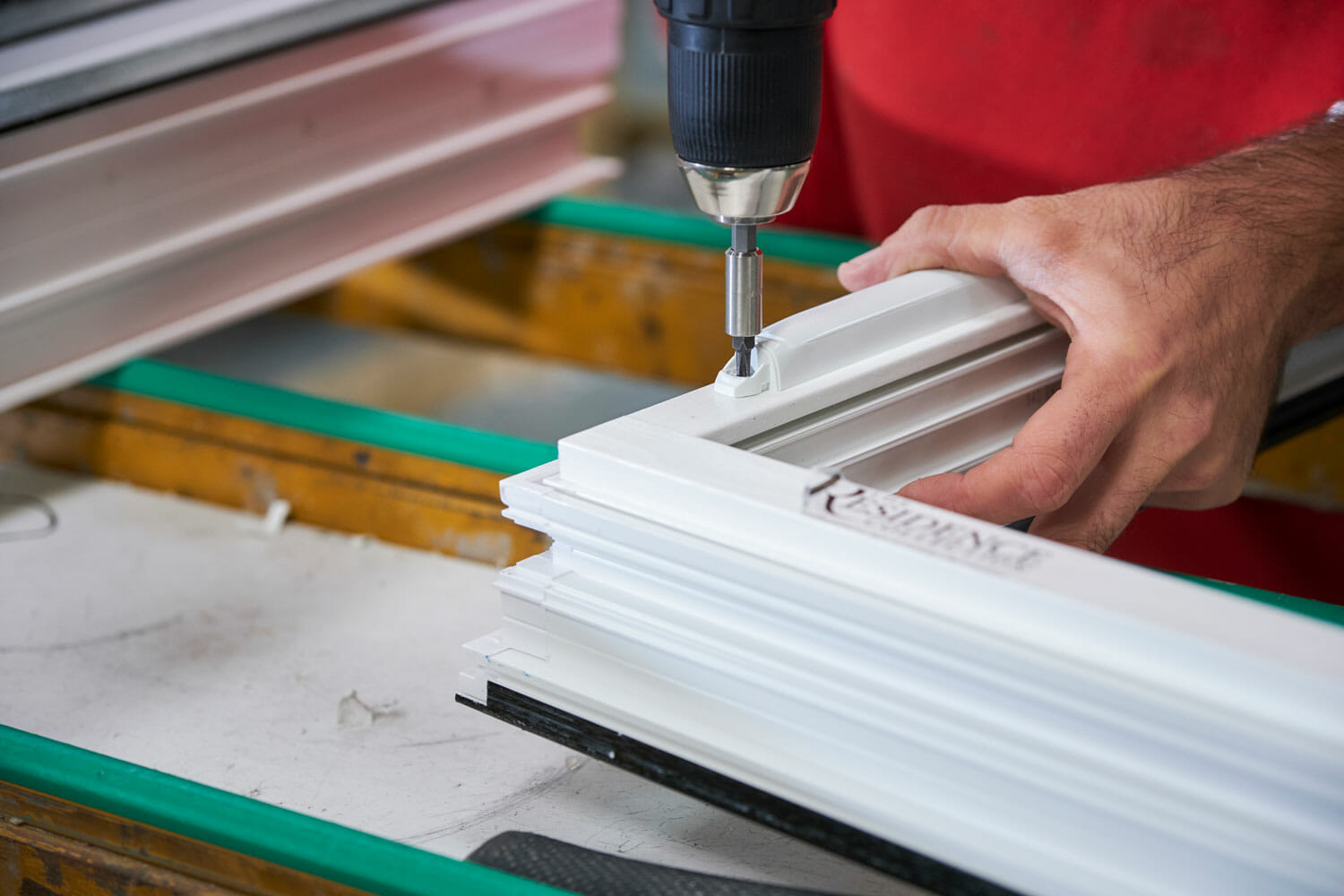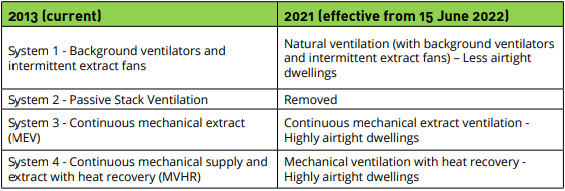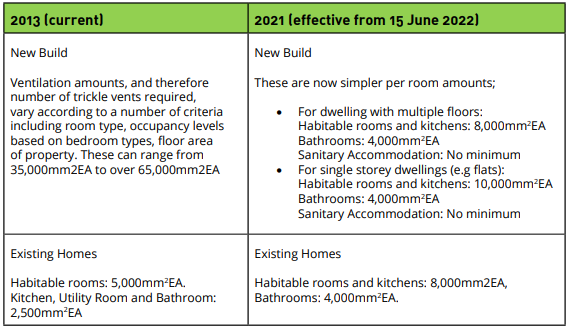
Revisions to the Building Regulations in England officially came into effect from the 15th June 2022, with Wales following suit on the 23rd November 2022.
The changes are a number of implications for those providing ventilation in dwellings.
It is the intention that the updates ensure adequate ventilation of all types whilst the energy efficiency of housing is improved at the same time and the ventilation document works in conjunction with documents on Energy Efficiency, and for the first time, Overheating. As the saying goes, ‘Ventilate when you insulate’.
This is all part of the Government’s proposals for the Future Homes Standard, which provides a pathway for highly efficient buildings that are zero carbon ready, better for the environment and fit for the future. Implementation of a full technical specification is scheduled for 2025.
The Approved Document F (ADF) for domestic ventilation includes a number of changes from the previous version and moves towards more energy efficient buildings, which means that ventilation levels
have been increased to ensure sufficient air changes in dwellings.
In all instances, the revised document redefines what airtight and less airtight levels are, which has a bearing on the type of ventilation system that should be incorporated.
The ventilation systems that are typically utilised in the UK have been labelled slightly differently (see table 1), and are no longer numbered.

As before, other system designs are allowable but need sign off and proof of compliance that they achieve the ventilation rates set in the document.
Mechanical ventilation has been affected with a large increase in per bedroom rate. Buildings that are classed as ‘less air tight’ will require the natural ventilation (background ventilators and intermittent fans), those buildings that are ‘highly air tight’1 will require either continuous mechanical extract ventilation or mechanical ventilation with heat recovery.
For background ventilation, which is the continuous change of air that should be occurring in addition to extract ventilation and rapid (e.g. opening windows) ventilation, the document shows an uplift in the amount of ventilation needing to be provided when windows are being replaced. The contractor should now be fitting background vents, usually trickle vents in the windows, whether the previous windows had them fitted or not. There is an exception when windows being replaced are less than 30%, but this can cause issues with the homeowner depending on requirements.
In new build situations, the amount of background ventilation can now be calculated in an easier way and is based on a certain amount per room, rather than based on a total amount for the whole property, which meant someone having to add this up and allow for certain additional criteria, such as floor area, number of bedrooms and airtightness level, before calculating whether the overall number of vents comply with the total required (See table 2). Work on existing dwellings has also seen an increase, shown in table 2.

These revisions are all designed to continue the ongoing improvement of the quality of the UK housing stock. The increased emphasis on ventilation in both new and existing dwellings is essential, especially in the current climate where indoor air quality and the build-up of pollutants and airborne viruses is of concern to everyone more than ever.
Tyson Anderson is the Sales and Marketing Director at Titon Hardware Limited and has over 25 years’ experience within the sector.
For more info contact Titon on marketing@titon.co.uk or go to www.titon.com/regulations
